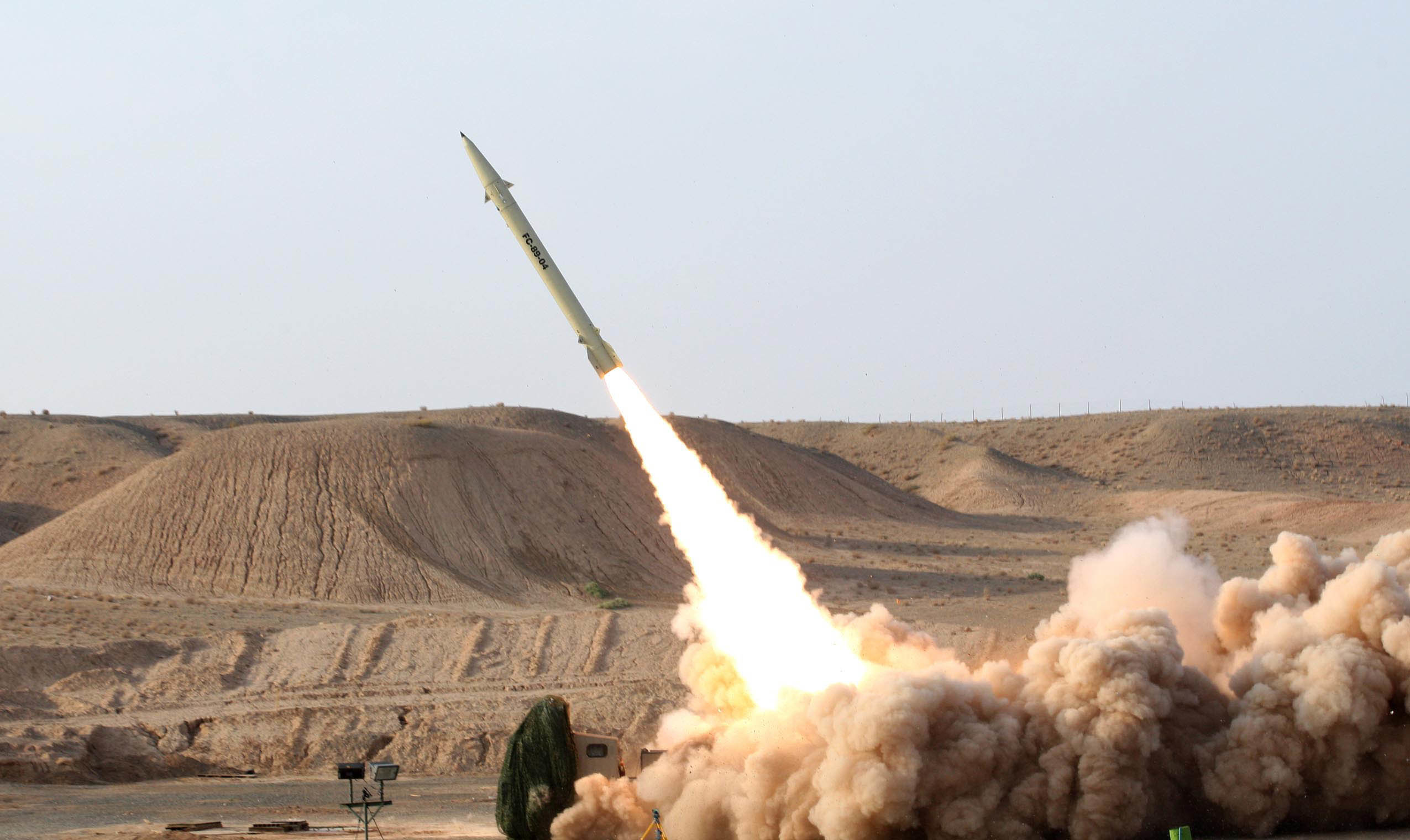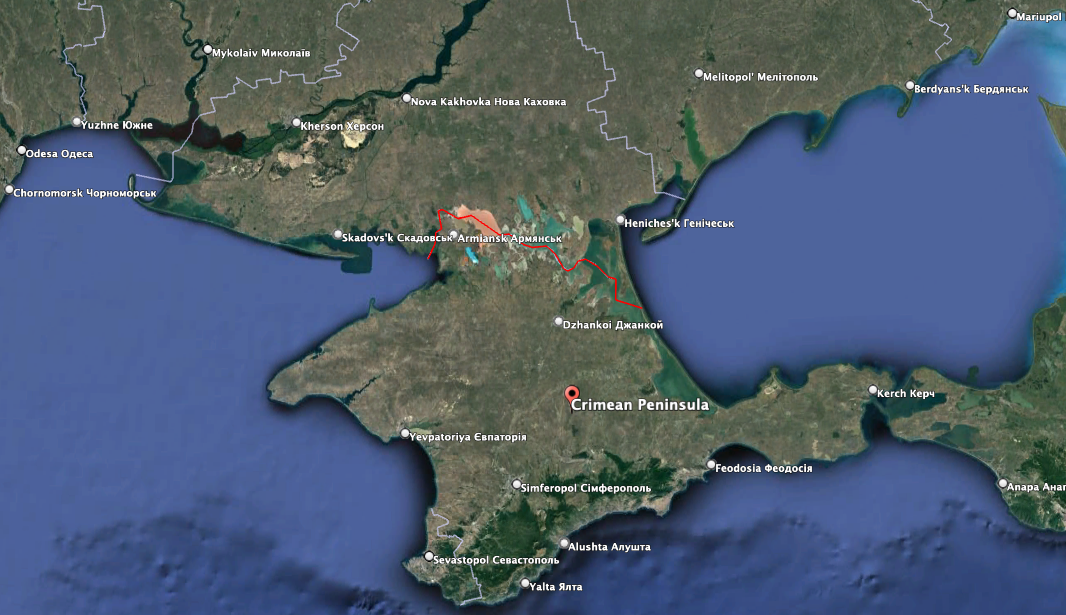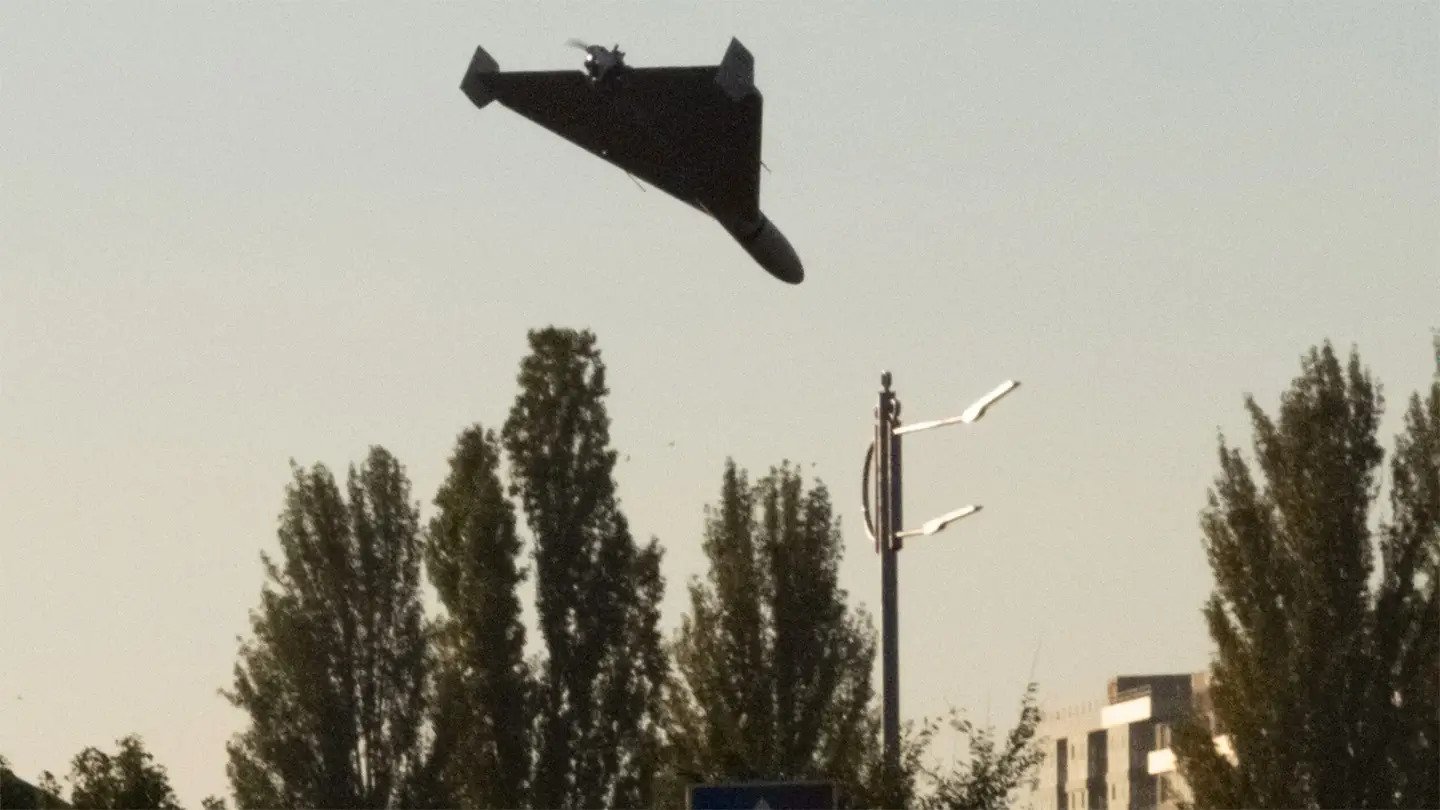Ukrainian intelligence officials say that after Russia launched several large waves of drone attacks on Ukraine last week, it is due to receive another shipment of hundreds of drones from Iran sometime in the not-too-distant future.
“To date, they have used approximately 660 Shahed drones,” Vadym Skibitskyi, a representative of Ukraine’s Defense Intelligence Directorate (GUR), told the Ukrainian RBC-Ukraine news outlet in an interview on Wednesday. “The contract calls for 1,750. It takes time for their delivery and preparation. They have used a large amount in recent days and these stocks need to be replenished.”
Skibitskyi said that “according to our data, they will now have another delivery batch.”
While he did not know when those drones would be delivered, Iran usually sends them “in batches of 250-300 pieces. Let’s see how it will be this time.”
The White House said on Wednesday it has no details about any pending new shipment of Iranian drones to Russia.
“I don’t have anything more for you in terms of indicators of what would be future provisions,” National Security Council spokesman John Kirby told reporters, including from The War Zone, during a Wednesday afternoon press briefing. “The only thing I would say is that we continue to see this deepening, burgeoning defense relationship between Iran and Russia. And it’s concerning to us not only because of the war in Ukraine but what it could mean in terms of our national security interest in the Middle East and our partners there.”
There had been recent indications that – as part of that growing relationship – Iran would receive Russian-made Su-35 Flanker-E fighters this year. The assessment was based on a program to teach a tranche of Iranian pilots to fly the Su-35 that took place in Russia in the spring. That training is part of what American authorities have said is an “unprecedented” degree of military and other technological assistance flowing from Moscow to Tehran that is tied, at least in part, to Iran’s support for Russia’s war in Ukraine, including deliveries of kamikaze drones. You can read more about that here.
While the Russian government is still reportedly seeking to acquire hundreds of Iranian short-range ballistic missiles as part of this exchange, on Wednesday Kirby said “we don’t have any indication that there’s been some sort of consummation or deal with respect to ballistic missiles.”

In October, Ukrainian GUR chief Maj. Gen. Kyrylo Budanov told The War Zone that Iranian short-range ballistic missiles (SRBM) – Fateh-110 and Zolfaghar SRBMs capable of striking targets at distances of between 186 and 435 miles – would arrive in Russia by November.
But last month, he revised that assessment, telling The New York Times that Iran is wary of sending those missiles out of concerns about additional economic sanctions.
“Iran is not hurrying to do this, for understandable reasons, because as soon as Russia fires the first missiles the sanctions pressure will grow” on Iran, Budanov said.
Regardless, given how Iranian drones have already helped Russia and how Iranian SRBMs would present a threat Ukraine has little way of defending against, this is something we will keep a close eye on.
Before we dive into the latest news from Ukraine, The War Zone readers can get caught up on our previous rolling coverage here.
The Latest
Speaking of Iranian drones, on Wednesday CNN reported that “parts made by more than a dozen US and Western companies were found inside a single Iranian drone downed in Ukraine last fall, according to a Ukrainian intelligence assessment obtained exclusively by CNN.”
The assessment, which was shared with U.S. government officials late last year, “illustrates the extent of the problem facing the Biden administration, which has vowed to shut down Iran’s production of drones that Russia is launching by the hundreds into Ukraine.”
That’s not the first time an Iranian drone used by Russian forces in Ukraine has been found full of U.S. and allied parts. A number of electronic components powering the Iranian-made Mohajer-6 drones were actually produced in the United States and by other allied nations.
Much of the heaviest fighting continues to take place in Donetsk Oblast. Aside from Russia and Ukraine trading long-range fire there – Ukraine blowing up a building full of Russian conscripts Monday while Russia hit an ice rink on Tuesday – the battle for Donbas rages on.
“The fighting over the Donbas has been quite intense in recent weeks, and it’s pretty clear to us and certainly clear to the Ukrainians that Russians continue to flow manpower to try to tip the balance there, particularly [in] the Donetsk area,” Kirby told reporters Wednesday. “And it’s war, and it’s bloody and it’s vicious.”
Kirby declined to provide the NSC’s take on the number of casualties in Monday’s Ukrainian attack on Makiivka. Russia Wednesday upped the total to 89 while Ukrainian officials and Russian milbloggers say hundreds were killed.
Nor would he say whether HIMARS were used as the Russian Defense Ministry (MoD) claimed. But he said Ukraine was well within its rights to use the weapons its been provided to defend itself and that there could be more HIMARS on the way in addition to the 20 delivered and 18 more promised.
The U.S., he said, “could very well include more HIMARS going forward” in future weapons delivery packages.
On Monday, we reported that Russian milbloggers were outraged over the situation at Makiivka. That outrage continued Wednesday, as many of them said that the Russian MoD’s blame for the attack on conscript cell phone usage was a cover-up for larger problems.
Elsewhere on the battlefield, heavy fighting continues in Bakhmut in Donestk and along the P-66 Highway area running from Svatove to Kreminna in Luhansk. Here are some key takeaways from the latest Institute for the Study of War assessment:
- Russian forces continued limited counterattacks along the Svatove-Kreminna line as Ukrainian forces continued to strike Russian military logistics in Luhansk Oblast.
- Russian forces continued offensive operations near Bakhmut and Avdiivka and may be reinforcing their grouping in western Donetsk Oblast.
- Ukrainian forces have reportedly established positions on the Velikiy Potemkinsky Island in the Dnipro River delta as of January 2.
If Ukraine can break through Russia’s defensive lines along the P-66 Highway, it could push closer to Luhansk City, Ukrainian Brig. Gen. Oleksiy Gromov told reporters Wednesday.
The occupation governor of Sevastopol reported two drones were shot down Wednesday over the Belbek Airbase in the suburbs of Sevastopol, home to the 38th Fighter Aviation Regiment. It was the latest in ongoing assaults on Crimea by unmanned aerial and sea vehicles.
“In the morning, air defense systems shot down two UAVs over the sea in the Belbek area,” Mikhail Razvozhaev wrote on his Telegram channel Wednesday morning local time. “All services are operating normally.”
There were reports that the base, at the time full of Russian fighter jets, was rocked by explosions in August. Satellite images obtained by The War Zone indicate no major change in aircraft at the base as of late last month.
Crimea is a key focus of both sides. On Tuesday, a GUR spokesman said Russian efforts to fortify the peninsula it has occupied since 2014 will not be successful.
Russia is moving new military units to the north of Crimea, Andriy Chernyak, a GUR spokesman, told the Ukrainian Ukrinform news agency Tuesday. The Russians, he added, are also continuing to build defense structures both in the north of the occupied peninsula and in the occupied part of the Kherson region. He also told Ukrinform that Russia has “ground-based, air-based and sea-based nuclear munition carriers” stationed in Crimea.
“Military intelligence sees that ground-based, air-based and sea-based nuclear munition carriers are currently stationed in the temporarily occupied Crimea,” he said. “We are talking about ships, submarines, aircraft and ground-based complexes that can strike with nuclear munitions.”
But while Russia is attempting to preserve the land corridor to Crimea, Chernyak said Ukraine has the means to cut off that corridor.
“Given that our foreign partners supply us with new types of weapons, the so-called land corridor to Crimea is certainly not safe,” said Chernyak. “Ukraine will strike Russian positions throughout the occupied territory.”
While he did not specify the type of weapons, Chernyak was no doubt talking about the U.S.-provided U.S. M142 High Mobility Artillery Rocket Systems, or HIMARS systems or the M270 Multiple Launch Rocket System (MLRS) donated by NATO nations. Both fire Guided Multiple Launch Rocket System (GMLRS) munitions with a maximum range of just over 50 miles.
From the closest Ukrainian positions on the west bank of the Dnipro River, that puts the northern tip of Crimea, as well as much of Kherson Oblast well within range of HIMARS or M270 units, which have been devastating Russian forces across the battlefield.

Last month, the Pentagon announced new plans to transfer “precision aerial munitions” to the Ukrainian military, which reports have said will constitute bombs fitted with GPS-assisted Joint Direct Attack Munition (JDAM) guidance kits. The JDAM would provide the Ukrainian Air Force with an entirely new capability to attack precise coordinates on the ground while offering a degree of standoff protection to the launch aircraft.
Chernyak also did not specify which Russian units were moving to the north of Crimea or how many troops are involved. We reached out to the GUR for clarification and will update this story with any information it provides.
“We would not be able to confirm” Russian troop movements in Crimea, Kirby told The War Zone Wednesday, adding that “we certainly won’t speak to Ukrainian operations one way or the other.”
The GUR also claimed that there has been an increase in pro-Ukrainian partisan attacks in Russia, including another stoppage of trains along the Trans-Siberian Railway.
“On the night of January 4 in Russia, partisans once again stopped the movement of civilian trains and military echelons on the section of the Trans-Siberian Railway in the Krasnoyarsk region,” the GUR claimed. “In the new year of 2023, this is already at least the sixth case of the destruction of signaling, centralization and blocking blocks on the railways in various regions of Russia, which leads to violations in the movement schedules of military echelons. Last year, 2022, there were about 40 such cases, as well as the destruction of railway transformers and locomotives. A significant intensification of rail partisans in Russia is noted after the announcement of partial mobilization by the Putin regime.”
The War Zone could not independently verify the GUR claims.
French President Emmanuel Macron told Ukrainian leader Volodymyr Zelensky his government would send AMX-10 RC armored combat vehicles to help in the war against Russia, according to Reuters. AMC-10 RCs are equipped with 105mm main guns similar to what is found on some tanks, giving them a heavy punch while also being very mobile. This is a major win for Ukraine’s ground combat arsenal.
Artillery shells remain a critical need for both sides. The Norwegian Armed Forces on Wednesday announced that 10,000 artillery shells have now arrived in Ukraine that can be used in several weapons, including M109 self-propelled howitzers which Norway has previously provided to Ukraine.
Rob Lee on Wednesday Tweeted what he believes are the first photos of Ukrainian 155mm BONUS precision-guided anti-tank artillery round submunitions seen in this conflict.
The Ukraine Weapons Tracker OSINT group reports that the 28 Slovenian M-55S tanks transferred to Ukraine last year are now in service with the Ukrainian 47th Brigade, complete with Kontakt-1 explosive reactive armor.
Drones continue to play a critical role in correcting indirect fire, as the troops in this video explain. They add that Javelin anti-tank guided missiles remain a key weapon keeping Russian armor at bay.
And despite the dangers, Ukraine is still flying rotary-wing missions against the Russians, as you can see in the videos below.
The Ukraine Weapons Tracker OSINT group posted a picture of what it says is the first loss of a T-90S tank, which was originally meant for export, but pressed into service in Ukraine with ongoing armor losses.
And finally, wood you believe the extent that Russia is going to camouflage its vehicles? The Clash Report says the Russian Army is disguising its fuel trucks as timber trucks. Desperate Russian troops have been adding wood to their vehicles since the start of the war in an effort to provide extra, or any many cases, any, armor protection, but here it’s likely more about the disguise than kinetic protection.
That’s it for now. We will update this story when there is anything major to add.
Contact the author: howard@thewarzone.com
